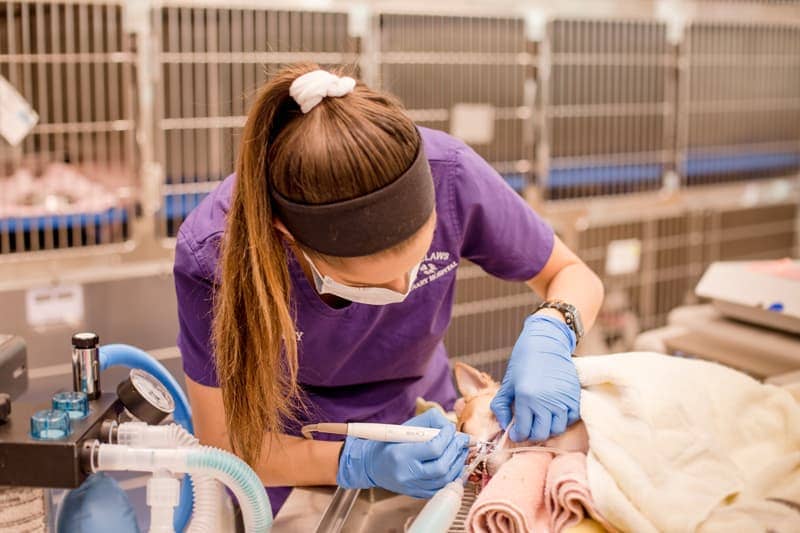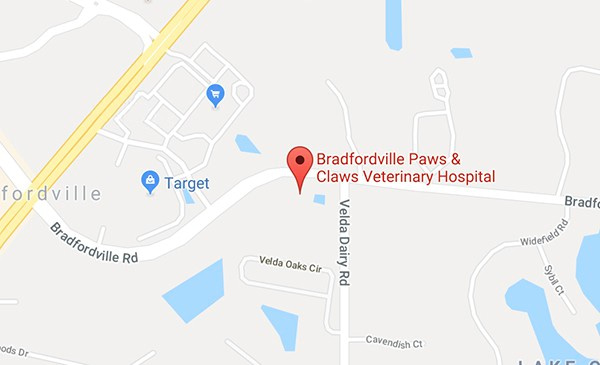Signs Your Pet May Have Dental Issues
Pets are great at hiding pain, but dental problems often come with subtle clues that something’s not right. If you’ve noticed any of the following symptoms, your dog or cat may already be dealing with dental disease.
Common Warning Signs:
- Bad breath (not just “dog breath”—a foul odor)
- Yellow or brown buildup on the teeth
- Red, swollen, or bleeding gums
- Dropping food or chewing on one side
- Pawing at the mouth or rubbing their face
- Drooling more than usual
- Loose or missing teeth
- Reluctance to eat hard food or chew toys
- Changes in behavior, like irritability or withdrawal
Even one of these symptoms can point to discomfort or infection in the mouth. And remember, many pets show no obvious signs at all until dental disease is advanced.
Untreated Dental Disease Can Lead To:
- Chronic pain and discomfort
- Trouble chewing and eating
- Abscesses and oral infections
- Bacteria entering the bloodstream (affecting organs)
- Shortened lifespan
The good news? It’s preventable. With regular dental exams, cleanings, and at-home care, you can protect your pet from pain and help them live a longer, healthier life.
Think of dental care as more than just a fresh breath fix – it’s a form of life-saving preventive medicine.
What’s Involved in a Professional Dental Cleaning?
Many pet owners are surprised to learn how in-depth and important a professional dental cleaning is. It’s not just a surface-level polish – it’s a thorough medical procedure designed to prevent pain, infection, and long-term health issues.
Here’s what you can expect during your pet’s dental visit:
- Pre-Procedure Evaluation
Before anything else, your pet receives a full physical exam and pre-anesthetic bloodwork. This helps us ensure they’re healthy enough to undergo anesthesia safely.
- Safe Anesthesia and Monitoring
Because a proper dental cleaning requires access beneath the gumline, general anesthesia is essential. During the entire procedure, your pet is closely monitored by trained veterinary professionals to keep them safe and comfortable.
- Comprehensive Cleaning
Using specialized veterinary tools, we remove plaque and tartar buildup both above and below the gumline. This step is critical – most dental disease occurs where you can’t see it.
- Dental X-Rays
X-rays allow us to detect hidden problems like bone loss, tooth root infections, or fractures that aren’t visible during a visual exam.
- Extractions if Necessary
If any teeth are severely damaged or infected, we may recommend extraction to relieve pain and prevent further complications. We’ll discuss this with you beforehand and make sure your pet receives appropriate pain management.
- Polishing and Finishing Touches
After cleaning, we polish your pet’s teeth to smooth the enamel, which helps slow future plaque buildup. We’ll also review home care options tailored to your pet.
Frequently Asked Questions About Dog and Cat Dental Care
Dental health can be confusing, especially when your pet can’t tell you what’s wrong. Below are answers to the questions we hear most often from concerned pet parents.
Is anesthesia really necessary for a dental cleaning?
Yes. To properly clean under the gums and take dental X-rays, your pet must be completely still, and that’s only possible under general anesthesia. We use modern, safe protocols and monitor your pet closely to minimize any risks. Without anesthesia, only the visible surfaces of the teeth can be cleaned, which doesn’t address the real source of dental disease.
How often does my pet need a dental cleaning?
Most pets benefit from an annual dental cleaning, though some breeds (especially small dogs and cats) may need more frequent care. After your pet’s first cleaning, we’ll recommend a personalized schedule based on their age, breed, and oral health.
Can’t I just brush my pet’s teeth at home?
Brushing your pet’s teeth at home is a great habit, and we encourage it! But even with daily brushing, tartar and bacteria can still build up below the gumline where you can’t reach. That’s why professional cleanings are so important. Think of brushing as maintenance between deeper cleanings.
What if my pet already has bad teeth?
It’s never too late to help your pet feel better. If your pet has loose teeth, bad breath, or obvious discomfort, a dental exam is the first step toward relief. We’ll assess the situation, take X-rays if needed, and create a treatment plan that prioritizes your pet’s comfort and health.
How much does a dental cleaning cost?
Costs can vary depending on your pet’s size, the extent of dental disease, and whether extractions or X-rays are needed. We’re happy to provide an estimate after an initial dental exam. In many cases, preventing severe dental disease early on is far more cost-effective than treating it later.
Still have questions?
Our team is here to help. Call us anytime to schedule a consultation.


